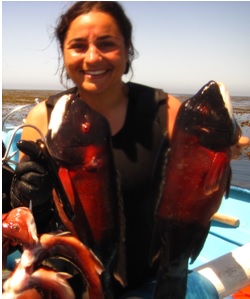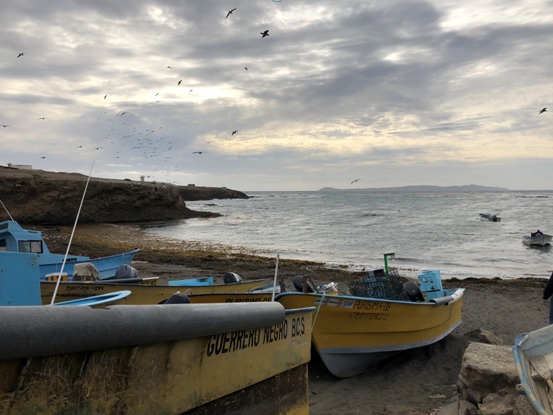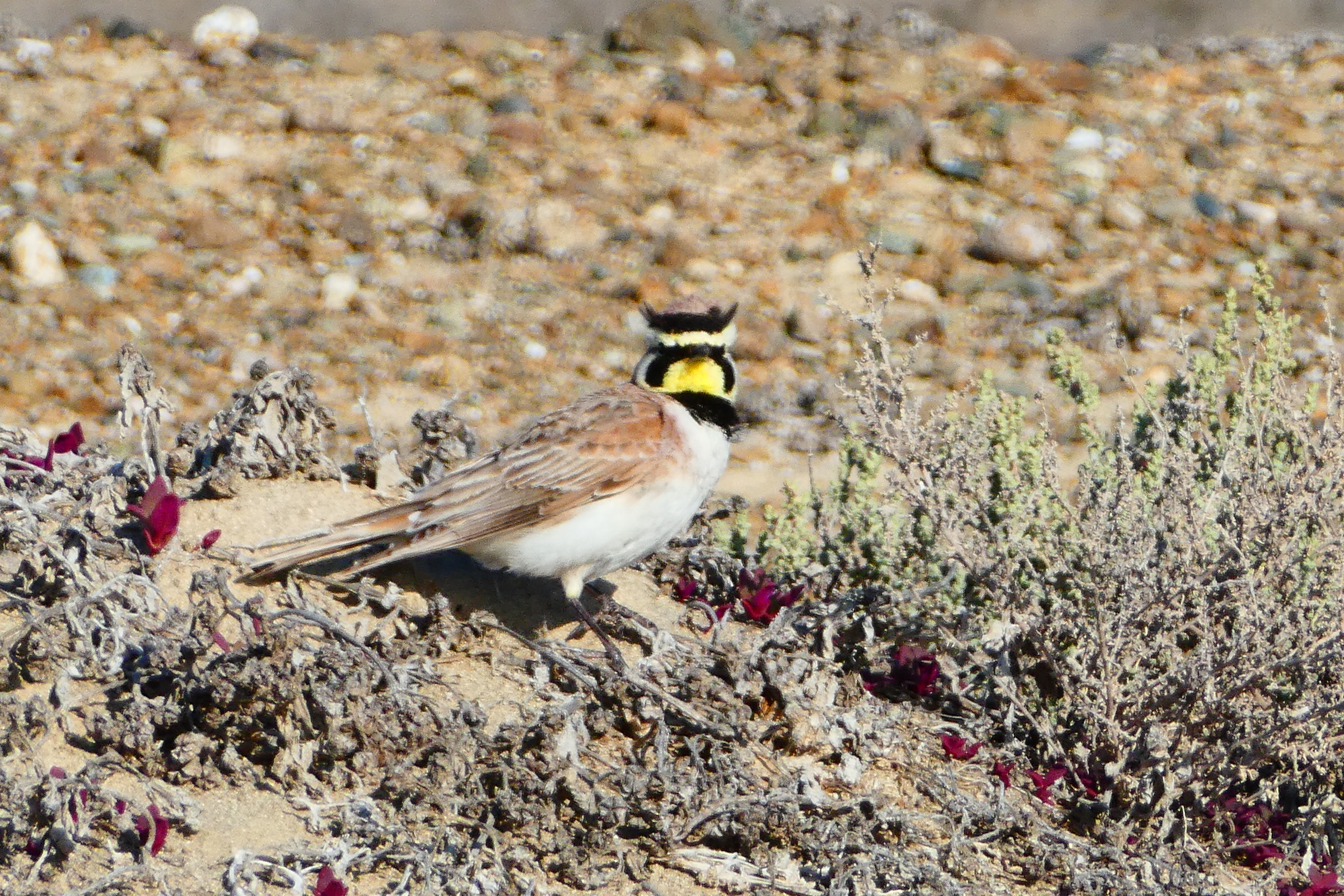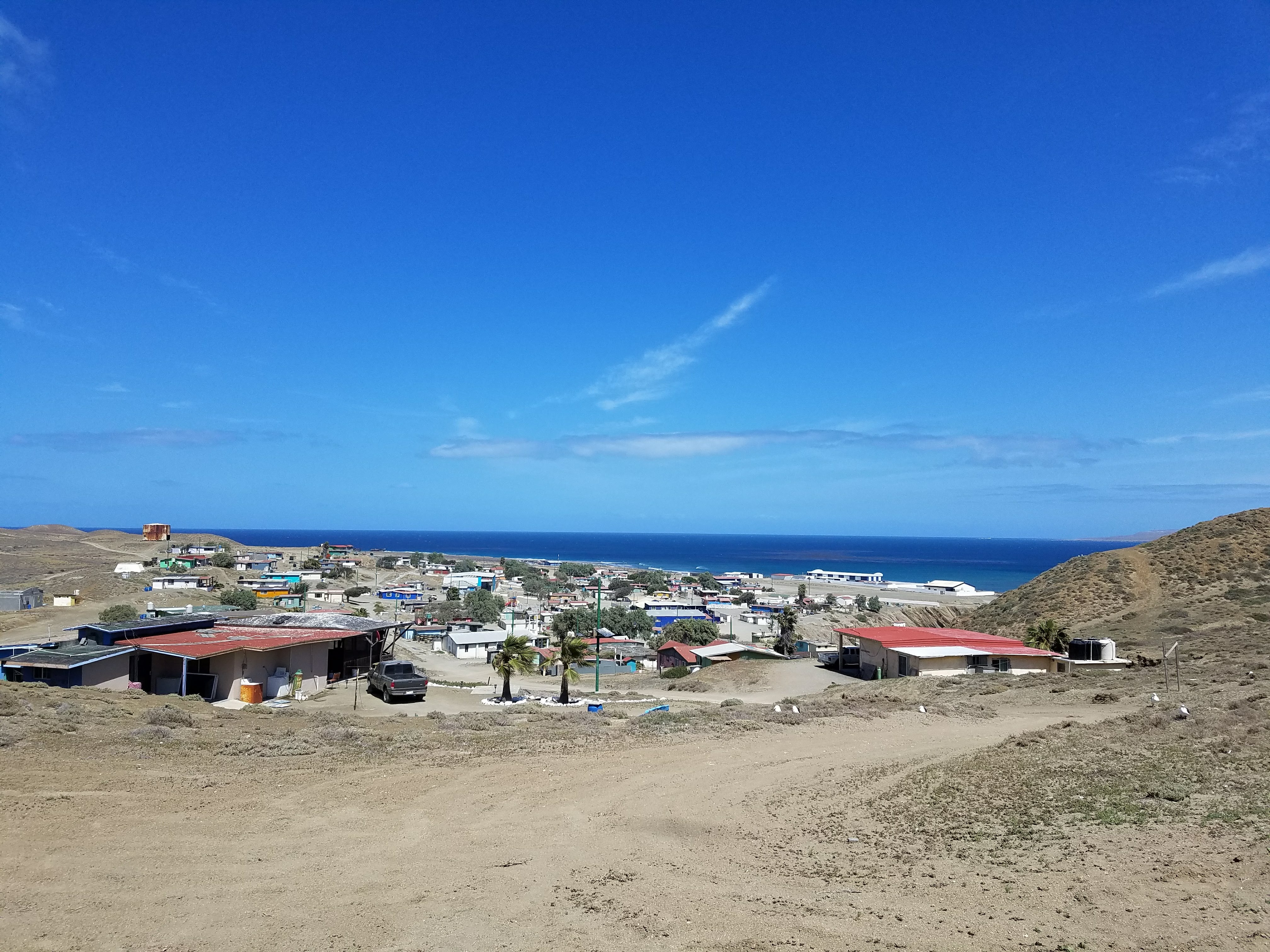By Rachel Brooks, Ichthyology Lab
The sun was beaming down during our 15 minute commute to our designated “dive locker” near the abalone farm. I was on my way to get geared up for our first dive day at Isla Natividad. As I walked, a mixture of emotions ran through my head. I was excited to get in the water and explore the luscious kelp forests surrounding the island but I was nervous as well.

For my project, I was interested in exploring the variability in diet of California Sheephead (Semicossyphus pulcher) across the island. To do this, I would be spearing Sheephead with a goal of collecting 20-30 individuals among three distinct areas for a total 60-90 fish. Being a virgin spearfisher (wo)man, my biggest worry was not being able to get one Sheephead, let alone 60+ across the seven days of diving…
As we began unloading gear off the truck and into the boat, I had the opportunity to meet our diving guide (Ivan) and boat captain (Jesus), who would be with us for the remainder of our diving expeditions. Our first dive site of the day was at Punta Prieta, one of the two Marine Reserves surrounding the Island. After a couple failed attempts to enter the water, we finally found a site where the current backed off and within minutes our team was in the water. Our first dive was strictly exploratory; we practiced our skills, got a lay of the land, and determined whether or not there was a need to tweak our projects before our next dive.
For our second dive, we ventured over to La Guanera, a non-reserve fishing site. This was the site where I would begin to collect my Sheephead samples. Before we hopped in the water, my dive buddy, Laurel, and I got a quick run-through (again) on how to use our speargun and sling. Ivan, who was either (1) interested in my project or (2) cognizant of our spearfishing experience (or rather lack thereof), was adamant on diving with us. Once we were suited up, Ivan, Laurel and I flipped over the side and began our descent through the lush kelp canopy towards the bottom.
It took only a matter of seconds before I saw my first Sheephead swim by. Eager to get my first fish, I loaded my speargun and zoned in with little success. This was the general theme for most of the dive: load, point, shoot, miss, and try again. It took what seemed like an eternity (20 minutes) before I got my first fish, but when I did, I was overflowing with excitement. Throughout my time on the island, I was able to hone in on my spearfishing skills progressing from collecting 5 fish a day to 20-40 fish a day.

Overall, I was able to collect a total of 80 fish for my project. I am truly grateful towards the people of Isla Natividad; not only were they eager to share their resources and knowledge for our projects, but they accepted a group of 20 gringos with open arms and made us feel like family. So, to the people of Isla Natividad, thank you and I can’t wait to see you again!





































 What I would come to learn is that this interaction summed up so much of what we the students (and let’s be honest… everyone else as well) love about Kenneth – his ability to teach and explain, without pushing or judging.
What I would come to learn is that this interaction summed up so much of what we the students (and let’s be honest… everyone else as well) love about Kenneth – his ability to teach and explain, without pushing or judging. And now…. Kenneth is retiring. We are looking for a new faculty chemical oceanographer. Candidates have been chosen, interviewed, and evaluated. As students, we are also asked for our evaluations. And as a student, I really don’t feel qualified to evaluate any candidate’s academic merit. The only thing I can evaluate is how any new faculty member might interact with students. Will they understand the grad student struggle? Will they care? Will they make me feel comfortable talking to them about things I might be struggling with?
And now…. Kenneth is retiring. We are looking for a new faculty chemical oceanographer. Candidates have been chosen, interviewed, and evaluated. As students, we are also asked for our evaluations. And as a student, I really don’t feel qualified to evaluate any candidate’s academic merit. The only thing I can evaluate is how any new faculty member might interact with students. Will they understand the grad student struggle? Will they care? Will they make me feel comfortable talking to them about things I might be struggling with?

